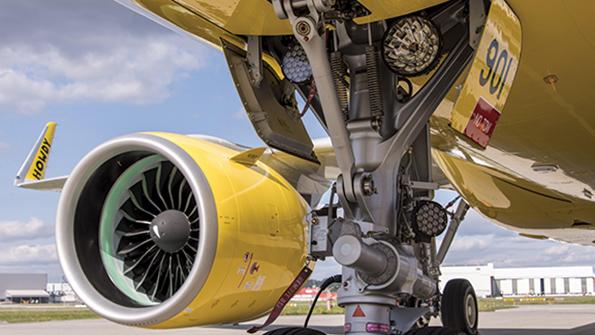
For most airlines around the world, the northern summer travel season has been a good one. IATA data released for June showed a 31% increase in year-on-year air traffic, taking the global total to 94.2% of pre-pandemic levels. There’s also been fewer major disruptions related to staff shortages at airports and within security or air traffic control systems.
But the good news is only relative to the three preceding worst years in the history of the air transport industry, and it disguises a bleaker reality.
First, the air traffic recovery to almost 2019 levels does not show where passenger numbers would have been in 2023 had the pandemic not occurred. The gap between air traffic yearly growth predictions made in 2019 and where the industry now stands remains wide. Back in 2019, the world’s airlines carried some 4.5 billion passengers—and were profitable as a collective. IATA forecast then that there would be a 4% increase in traffic in 2020, taking passenger numbers to over 4.7 billion. Had that annual increase trendline continued through 2022, airlines would be expecting to carry well over 5 billion passengers this year versus the 4.35 billion that IATA currently forecasts.
The second issue marring the recovery story is that it could be better regardless of the trendlines. Ironically, it’s the airlines’ own suppliers that are hindering what could be a stronger season and full year for the industry.
IATA director general Willie Walsh made that clear in a statement related to the June figures. “As strong as travel demand has been, arguably it could be even stronger. Demand is outrunning capacity growth. Well-documented problems in the aviation supply chain mean that many airlines have not taken delivery of all the new, more environmentally friendly aircraft they had expected, while numerous aircraft are parked awaiting critical spare parts,” Walsh said.
IATA and its member airlines’ frustration with the ongoing supply problems was a big talking point at the AGM in Istanbul in June. “The issue of supply chain weighs heavy on airlines,” RwandAir CEO and IATA board governor Yvonne Manzi Makolo commented during a closing session.
Across Asia, Europe, the Middle East and North and South America, airlines have been cutting schedules this year not because they can’t sell the seats—load factors are averaging in the mid-to-high 80s—but because they don’t have the new aircraft they expected to be delivered by now or because they have the aircraft, but they are grounded because of engine availability problems.
As IATA SVP sustainability and chief economist Marie Owens Thomsen lamented, “When aircraft are delivered six months late, they are considered to be on time.”
While aircraft delivery schedules seem to be stabilizing, problems affecting the Pratt & Whitney PW1100 geared turbofan (GTF) that powers many Airbus A320neo family aircraft and the A220 have broadened. What began as a durability issue related to hot and dusty environments morphed into what appears to be a manufacturing problem affecting some engines that will shorten inspection intervals and could affect operators well into 2024.
As an example, US ULCC Spirit Airlines—an all-A320 family operator—estimates it will have the equivalent of at least 10 aircraft out of service throughout 2024. Spirit CEO Ted Christie told analysts that RTX—formerly Raytheon Technologies and the parent company of Pratt—has promised to offset the financial impacts of the new problem, but details and timings of reimbursements “are unknown as of yet.”
ULCCs like Spirit depend on frequency, fast turnarounds and aircraft/engine reliability to maximize revenue on a low cost base. They draw in customers who otherwise might not fly. Each day they fail to operate at their most efficient is an opportunity lost to win a customer who might only fly once a year. Will RTX factor in those reimbursements the longer-term financial and market share impacts of the GTF problems on its customers?
Meanwhile, Rolls-Royce has hiked the prices of servicing its engines on widebodies like the Airbus A350 and Boeing 787. CEO Tufan Erginbilgic, who took over on Jan. 1, said it was an “obvious” but not an “easy” move. Posting a first-half operating profit of £673 million ($854 million) versus a £125 million profit for the same six months a year earlier probably tilted the needle more toward “easy.”
All this on top of the long-running issues with the Boeing 737 MAX and 787.
Profitability is not something any company should be ashamed of, but the large majority of airlines are still in the red and those that have clawed themselves back into the black from the pandemic abyss are often lambasted in the general media for “huge profits” when the industry’s average profit margin is a barely survivable 1.2%, or $2.25 per passenger.
What can airlines do about this perpetual situation where in the best of times their margins are razor thin and in the worst of times they are pummeled to financial ruin by circumstances outside their control—pandemics, terrorist acts, economic crises, government policies? It’s a syndrome that Owens Thomsen refers to as the industry’s resilience versus its robustness. Airlines are amazingly resilient; they return from each crisis because people always want to resume air travel at some point. But airlines have fixed high costs, highly complex and regulated operating environments, and often carry a high amount of debt. To be more robust, they must tackle debt and ensure their income doesn’t just squeak past their costs, or worse, fall below them.
Government policy is critical too, but so is having reliable equipment acquired and maintained at a reasonable price. At the AGM, Walsh said member airlines had asked IATA to represent them—as a collective—in front of OEMs. He pointed to a voluntary agreement that IATA formed with aftermarket suppliers a few years back when airlines raised concerns about the cost and lack of choice in MRO options.
Suppliers are being put on notice: Be fair, deliver what was in the contract or be ready to fully compensate your airline customers when you don’t deliver.
